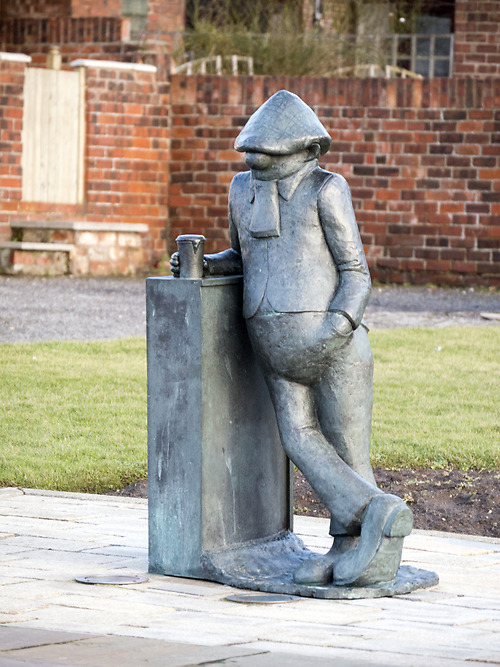 Hartlepool Sports & Leisure
Hartlepool Sports & Leisure
- Cinemas, Theatres & Dance Halls
- Musicians & Bands
- At the Seaside
- Parks & Gardens
- Caravans & Camping
- Sport
 Hartlepool Transport
Hartlepool Transport
- Airfields & Aircraft
- Railways
- Buses & Commercial Vehicles
- Cars & Motorbikes
- The Ferry
- Horse drawn vehicles
 A Potted History Of Hartlepool
A Potted History Of Hartlepool
- Unidentified images
- Sources of information
- Archaeology & Ancient History
- Local Government
- Printed Notices & Papers
- Aerial Photographs
- Events, Visitors & VIPs
 Hartlepool Trade & Industry
Hartlepool Trade & Industry
- Trade Fairs
- Local businesses
- Iron & Steel
- Shops & Shopping
- Fishing industry
- Farming & Rural Landscape
- Pubs, Clubs & Hotels
 Hartlepool Health & Education
Hartlepool Health & Education
- Schools & Colleges
- Hospitals & Workhouses
- Public Health & Utilities
- Ambulance Service
- Police Services
- Fire Services
 Hartlepool People
Hartlepool People
 Hartlepool Places
Hartlepool Places
 Hartlepool at War
Hartlepool at War
 Hartlepool Ships & Shipping
Hartlepool Ships & Shipping

Andy Capp Statue
What we know about this image :
Andy Capp Statue which is next to the Pot House (Harbour of Refuge) pub on Croft Terrace at old Hartlepool.
The statue, by Shropshire artist Jane Robbins, captures the working class cartoon hero in a typically relaxed pose, but minus his trademark cigarette. The 5 feet high, bronze statue was unveiled on 28 June 2007. The £20,000 statue was funded by the North Hartlepool Partnership with the help of a £2,000 donation from the Daily Mirror, the newspaper in which Andy first appeared in 1957.
Reg Smythe, the creator of Andy Capp, was born and died in Hartlepool and based the characters on his own parents.
Donor : Don Stephenson
Creator : Don Stephenson
Click here to download a fullsize version of this pictureLocation
Related items :
 Andy Capp Statue
Andy Capp Statue
Andy Capp Statue which is located next to the Pot House (Harbour of Refuge) pub at old Hartlepool.
More detail » Smythe, Reg - Andy Capp
Smythe, Reg - Andy Capp
Reg Smythe was born in Hartlepool on July 10th, 1917, the son of Richard Oliver Smyth, a shipyard worker, and his wife Florence (née Pearce). He attended Galley's Field School in Hartlepool, but left when he was fourteen to take a job as a butcher's errand boy.
He joined the Army in 1936 and saw service in North Africa during the Second World War. Reg had a real talent for drawing, and became a gifted cartoonist. His most famous cartoon character was Andy Capp, a stereotyped unemployed northerner, complete with flat cap, Andy Capp was created in 1957 for the Daily Mirror newspaper and proved a huge success.
Reg Smythe died on June 13th, 1998, and in 2007, a bronze statue of Andy Capp was erected next to the Harbour of Refuge Pub in Old Hartlepool.
More detail » The Harbour of Refuge
The Harbour of Refuge
The Harbour of Refuge, Croft Terrace, Hartlepool was opened in 1847 although the present building was built in 1895.
It was often referred to as 'The Harbour' or 'The Pot House' as the outside was covered in glazed pottery tiles and in Autumn 2014, pub was officially renamed 'Pot House'.
 old Hartlepool
old Hartlepool
Old Hartlepool is the original fishing village which existed before West Hartlepool. The origins of ancient town of Hartlepool (Old Hartlepool) can be traced back to ca 647 AD. In the 8th century AD, Bede mentions it (“heopru” – the place where harts (deer) drink). The record goes blank then, and does not reappear until the 12th century. In 1201 King John confirmed a charter owned by Robert Bruce V. The name “Brus” or “Bruce” is still associated with parts of the town.
The fine abbey church of St. Hilda is mainly Early English, dating from 1185, on the site of an abbey which flourished as early as 658 AD. St. Hilda’s still flourishes and stands in a prominent place on the Hartlepool headland, and nearby the ancient town walls (completed ca 1322 as a defence against the twin enemies of the Scots and the sea) can still be seen.
On 8th February 1201, the town was granted its first royal charter by King John. A second royal charter was granted in 1593 by Queen Elizabeth (the First).
Hartlepool was visited several times by John Wesley on his preaching tours … he was certainly in the town in 1757 and 1786.
Old Hartlepool continued its independent existence until 1967, when local government reorganisation created the merger with its young neighbour, West Hartlepool.
More detail »




